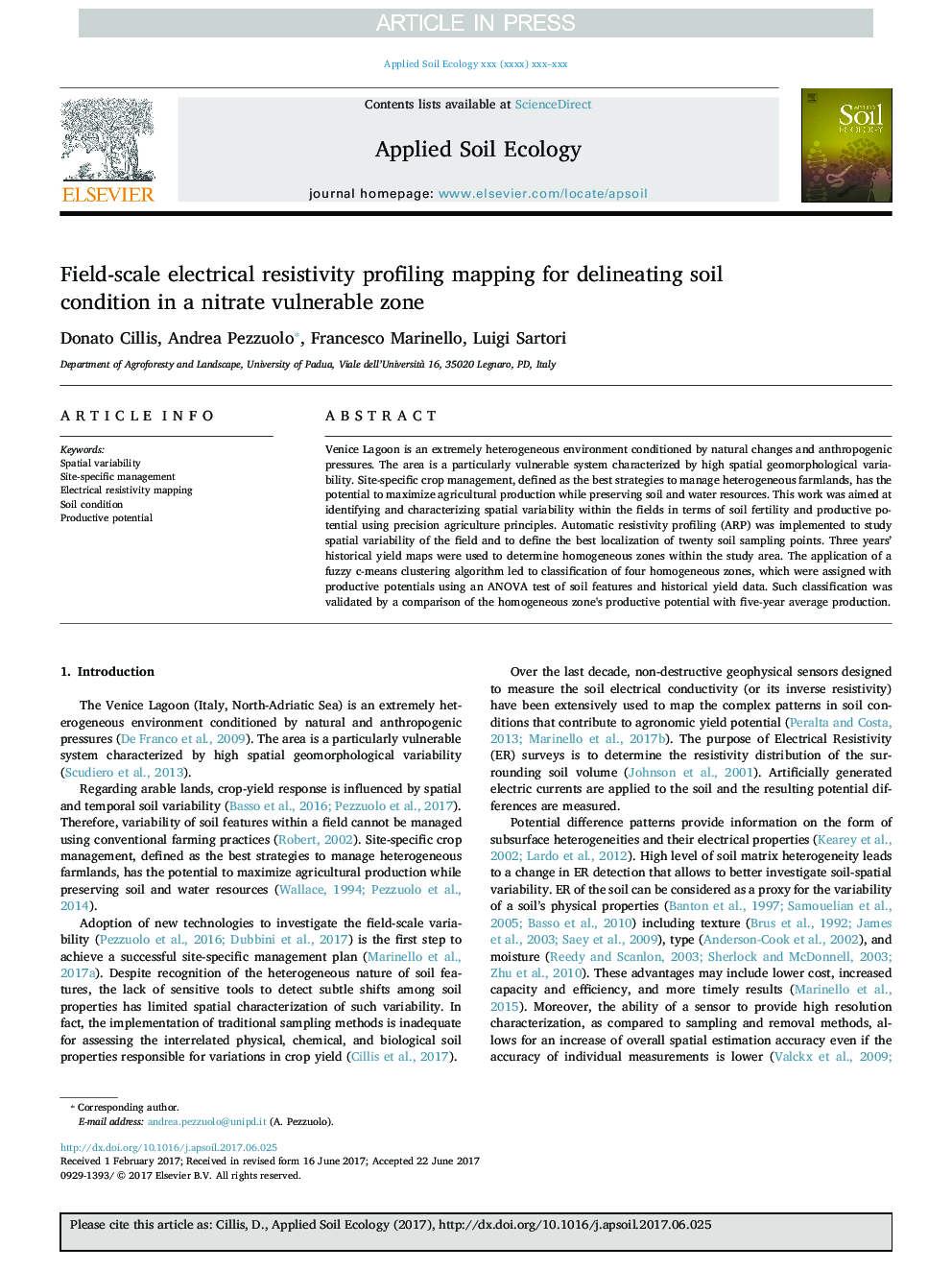| Article ID | Journal | Published Year | Pages | File Type |
|---|---|---|---|---|
| 8846920 | Applied Soil Ecology | 2018 | 7 Pages |
Abstract
Venice Lagoon is an extremely heterogeneous environment conditioned by natural changes and anthropogenic pressures. The area is a particularly vulnerable system characterized by high spatial geomorphological variability. Site-specific crop management, defined as the best strategies to manage heterogeneous farmlands, has the potential to maximize agricultural production while preserving soil and water resources. This work was aimed at identifying and characterizing spatial variability within the fields in terms of soil fertility and productive potential using precision agriculture principles. Automatic resistivity profiling (ARP) was implemented to study spatial variability of the field and to define the best localization of twenty soil sampling points. Three years' historical yield maps were used to determine homogeneous zones within the study area. The application of a fuzzy c-means clustering algorithm led to classification of four homogeneous zones, which were assigned with productive potentials using an ANOVA test of soil features and historical yield data. Such classification was validated by a comparison of the homogeneous zone's productive potential with five-year average production.
Related Topics
Life Sciences
Agricultural and Biological Sciences
Ecology, Evolution, Behavior and Systematics
Authors
Donato Cillis, Andrea Pezzuolo, Francesco Marinello, Luigi Sartori,
